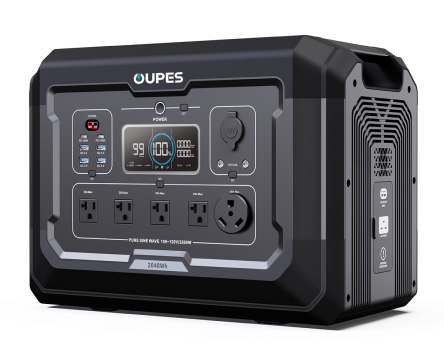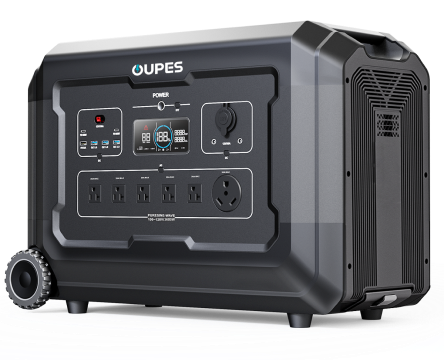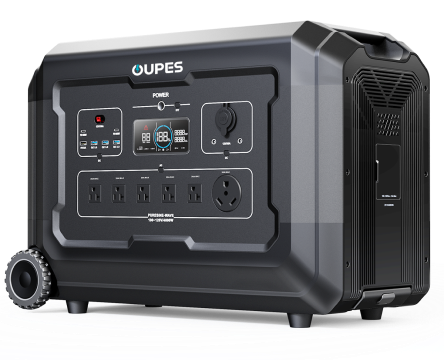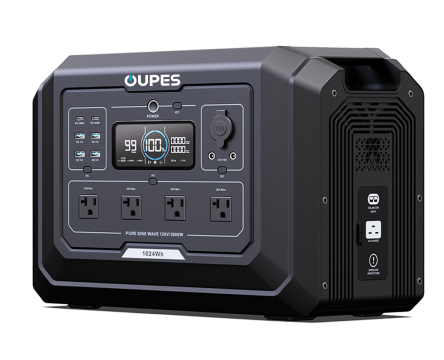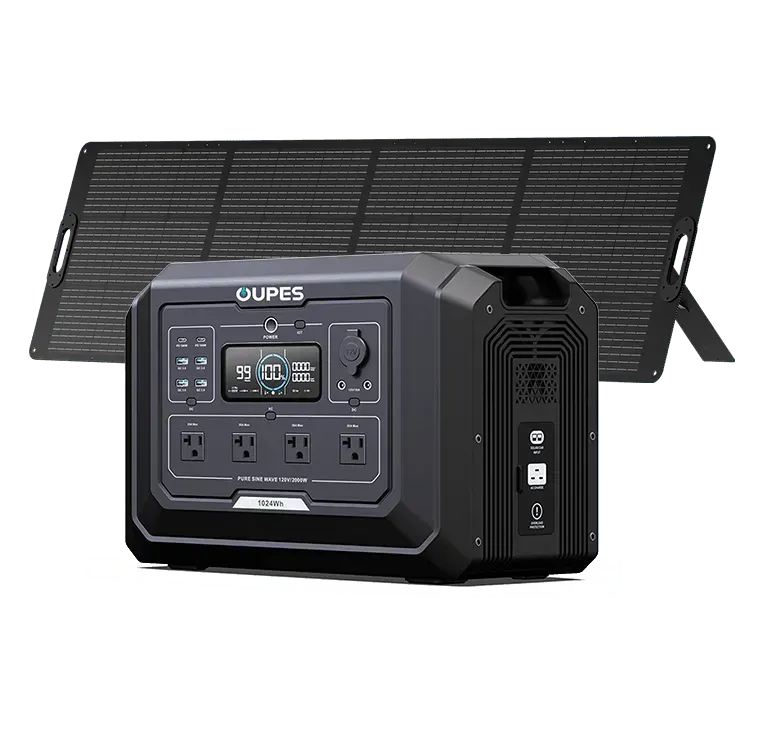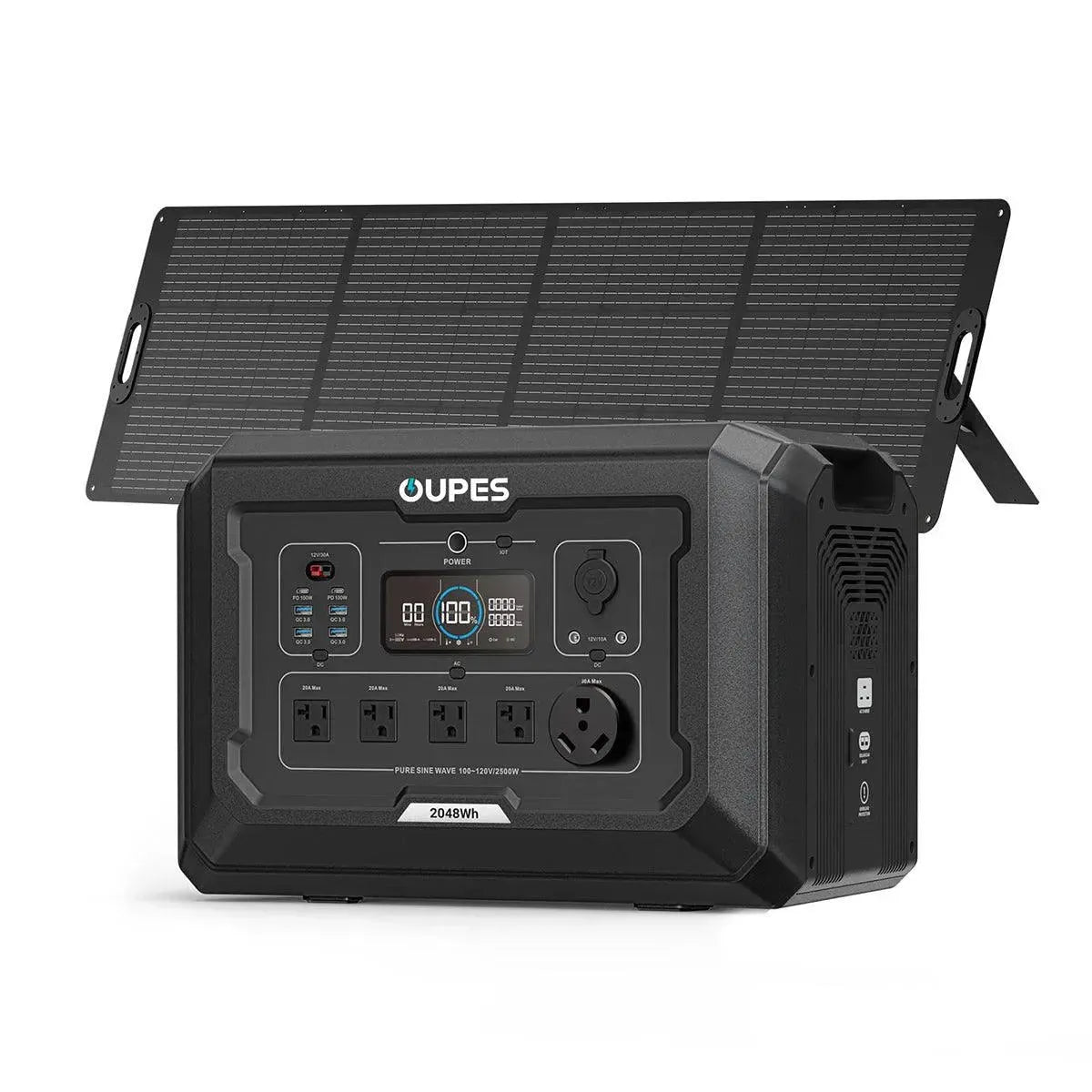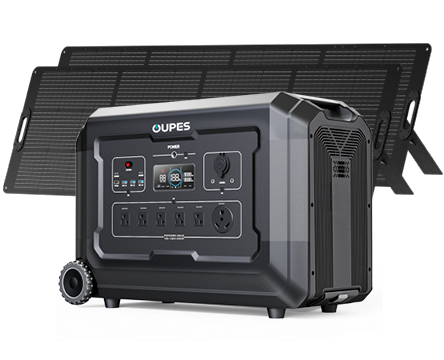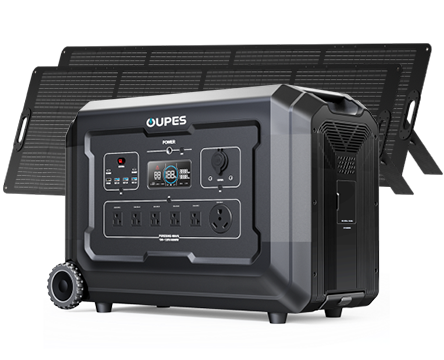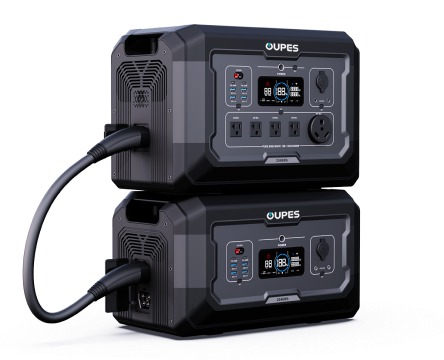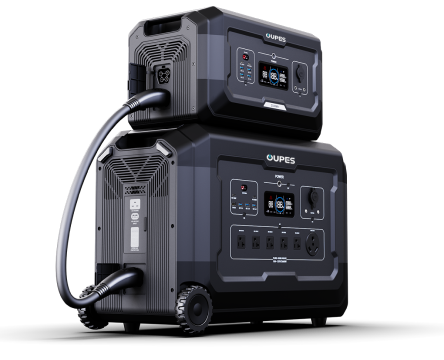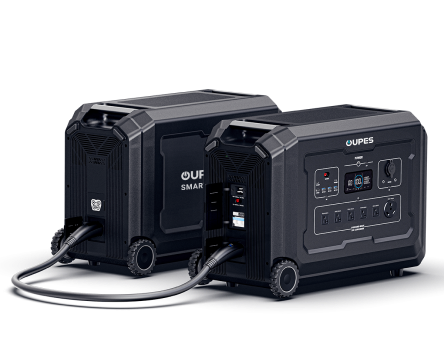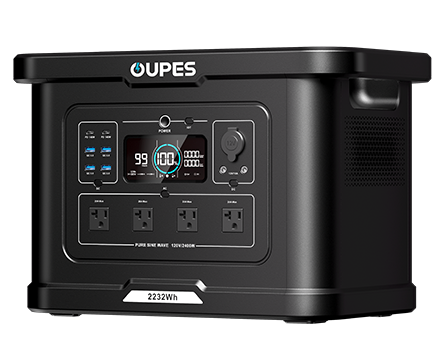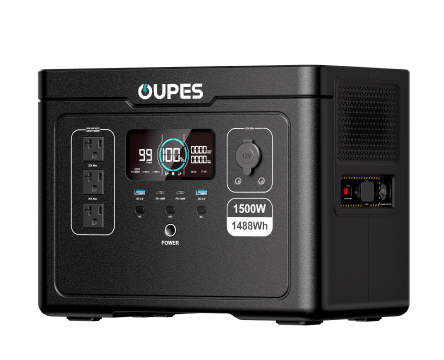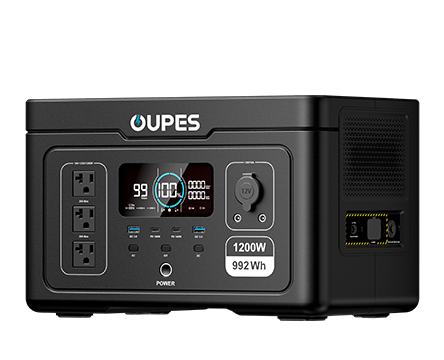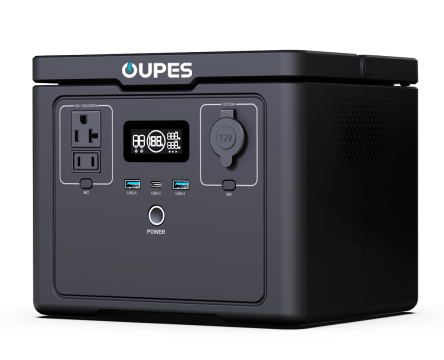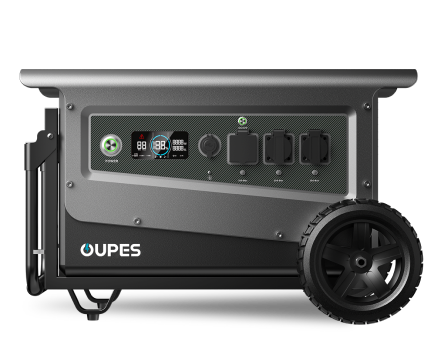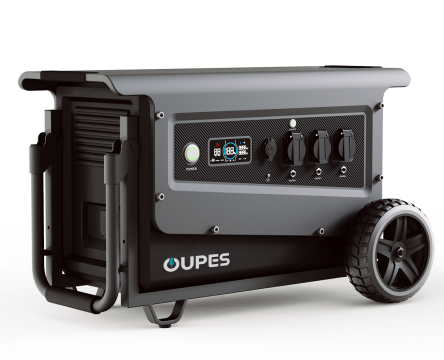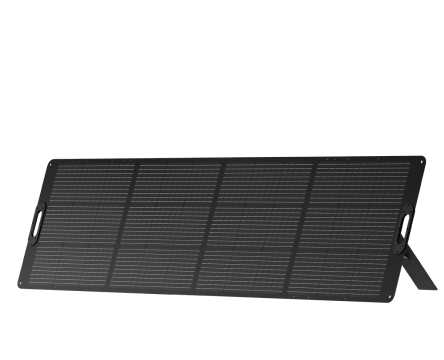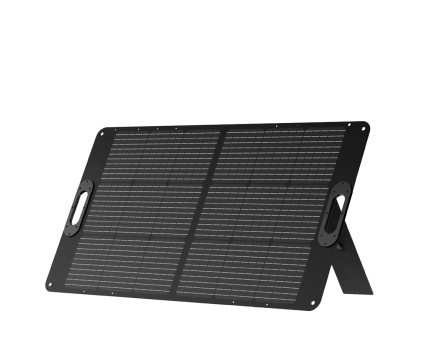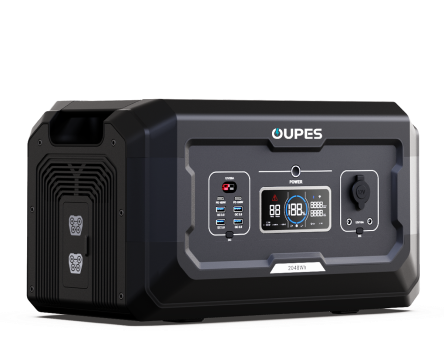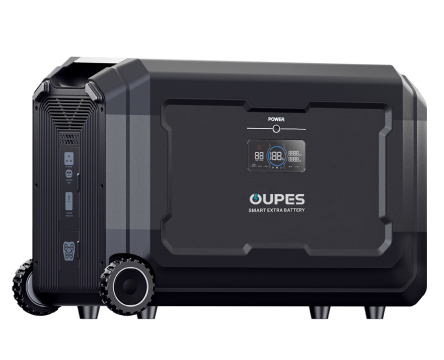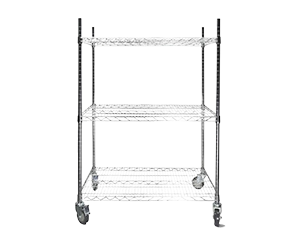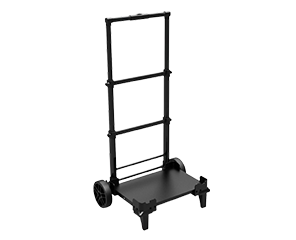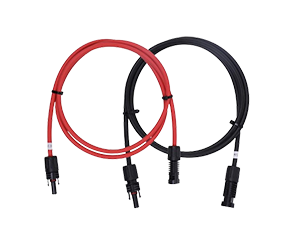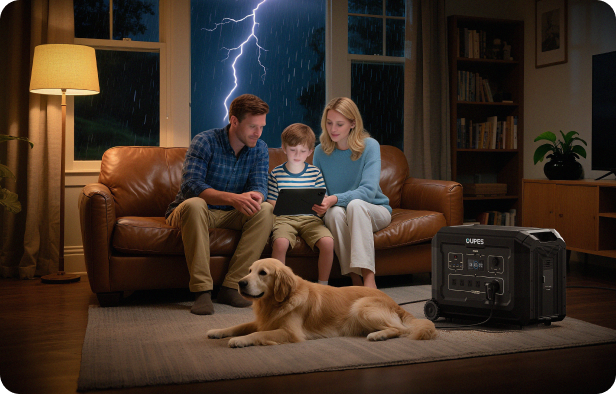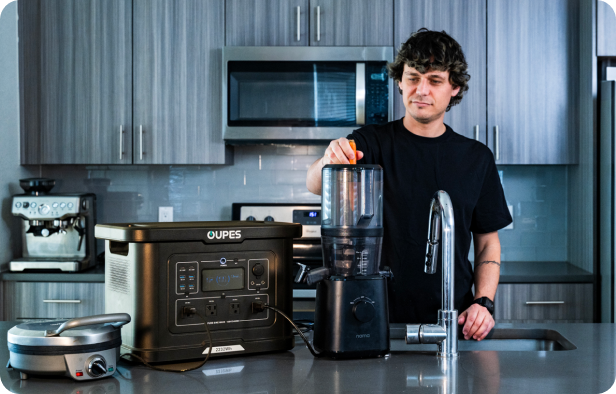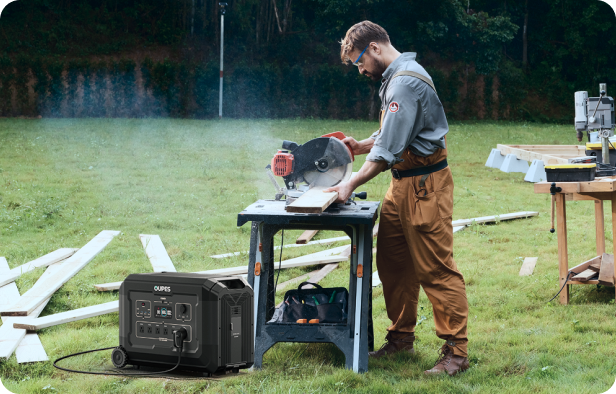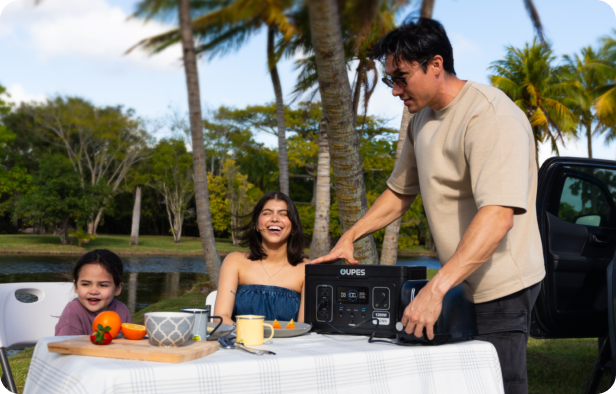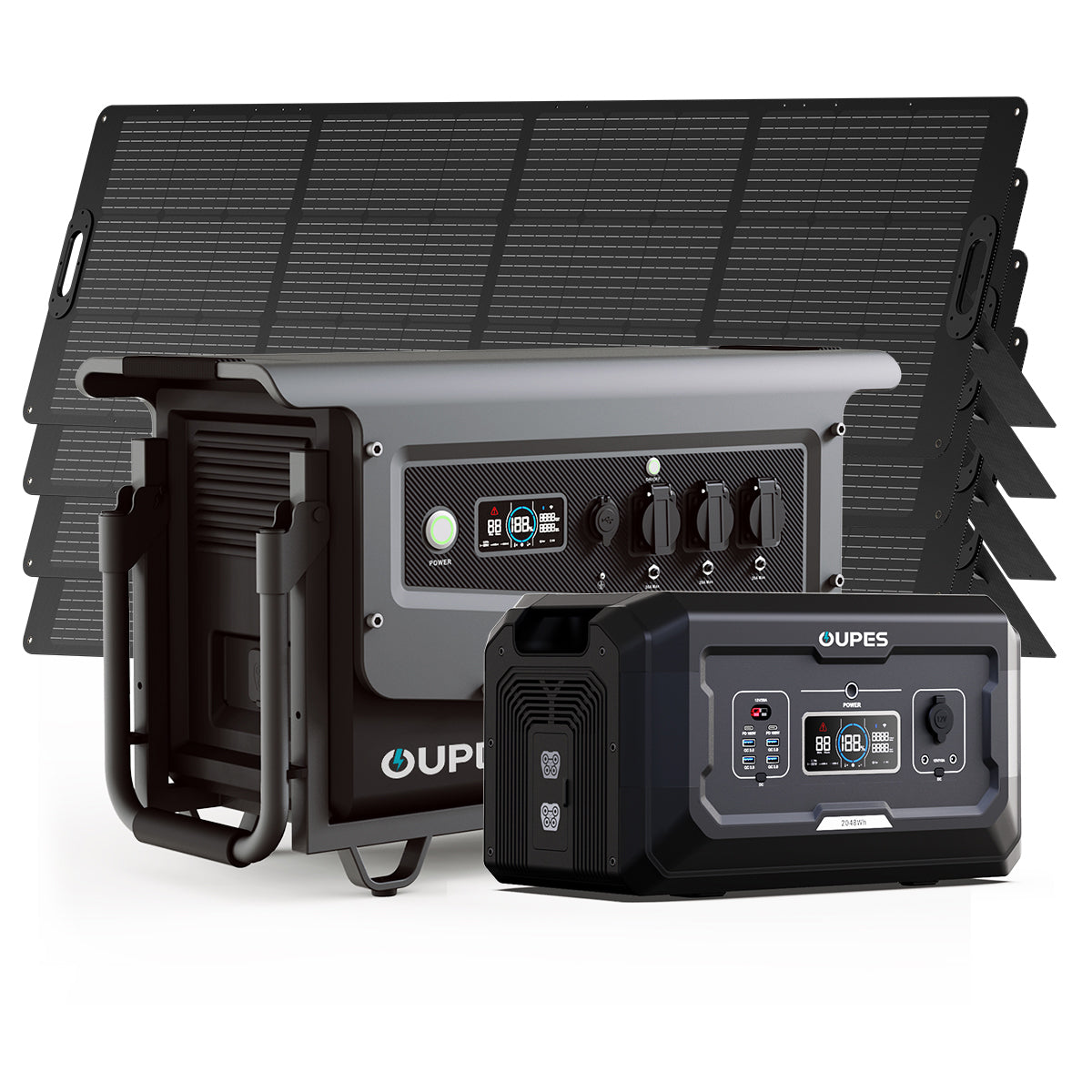
TL;DR / Key Takeaways
- Always prioritize safety: never run fuel generators indoors due to carbon monoxide risks.
- Use transfer switches or extension cords rated for outdoor generator use.
- Calculate appliance wattage before connecting devices to avoid overload.
- OUPES portable power stations provide a safer, cleaner alternative to fuel-based generators.
- Plan for long-term outages with proper maintenance, supplies, and renewable charging options like solar panels.
Introduction
Power outages can strike unexpectedly, leaving households without electricity for hours or even days. Generators are a common solution, but improper use can lead to serious safety hazards. This guide explains how to use a generator during a power outage safely and effectively, while also exploring cleaner alternatives like OUPES portable power stations.
Step 1: Prioritize Safety
Generators can produce deadly carbon monoxide. According to the U.S. Consumer Product Safety Commission, improper indoor generator use is a leading cause of CO poisoning during blackouts. Always follow these rules:
- Run fuel generators outdoors only, away from windows and vents.
- Install carbon monoxide detectors in your home.
- Use heavy-duty, outdoor-rated extension cords.
- Never plug a generator directly into a wall outlet (backfeeding is dangerous).
Step 2: Calculate Your Power Needs
Before connecting appliances, determine your total wattage requirements. Overloading a generator can damage both the generator and your devices.
| Appliance | Average Wattage | Notes |
|---|---|---|
| Refrigerator | 100–800W | Higher at startup (surge power). |
| Router & Modem | 10–50W | Keeps internet running during outage. |
| LED Lights (per bulb) | 5–15W | Energy efficient, low load. |
| Microwave | 600–1,200W | Short bursts of use. |
| CPAP Machine | 30–60W | Essential for medical needs. |
Step 3: Proper Setup and Usage
Using a Transfer Switch
For powering multiple circuits in your home, install a transfer switch. This device connects your generator safely to your electrical panel without backfeeding into the grid.
Using Extension Cords
If you don’t have a transfer switch, use outdoor-rated extension cords to plug appliances directly into the generator. Ensure cords are free of damage.
Fuel Management
Store fuel safely in approved containers. Rotate fuel every few months to prevent degradation, and never refuel while the generator is running.
Step 4: Consider a Cleaner Alternative
While fuel-based generators are common, they are noisy, produce emissions, and require constant refueling. OUPES portable power stations offer a safe, eco-friendly alternative:
- Zero Emissions: Safe for indoor use, no fumes.
- Quiet Operation: Operates silently, ideal for neighborhoods and emergency conditions.
- Rechargeable: AC wall charging, car charging, or solar panels for sustainable energy.
- Expandable Options: OUPES Mega series models scale up for whole-home backup.
OUPES Portable Power Stations for Outages
| Model | Capacity | AC Output | Solar Input | Best Use Case |
|---|---|---|---|---|
| Exodus 1200 | 992Wh | 1200W | 240W Max | Small appliances, short outages |
| Exodus 2400 | 2232Wh | 2400W (2600W Boost) | 800W Max | Refrigerators, routers, emergency gear |
| Mega 3 | 3072Wh | 3600W | 2100W Max | Family backup, extended outages |
| Mega 5 | 5040Wh | 4000W | 2100W Max | Whole-home backup, long blackouts |
Real-Life Scenarios
Short Blackout (8–12 Hours)
A small generator or the OUPES Exodus 1200 keeps lights, phones, and routers running until grid power returns.
Multi-Day Storm Outage
Families rely on the Exodus 2400 to power refrigerators, CPAP machines, and laptops during 2–3 day outages.
Severe Grid Failure
The OUPES Mega 5, paired with solar panels, provides enough power for entire households for weeks off-grid.
Step 5: Maintenance and Long-Term Preparedness
- Test your generator or power station monthly to ensure readiness.
- Keep extra extension cords, batteries, and solar panels on hand.
- Train all household members in safe setup and usage procedures.
Frequently Asked Questions (FAQ)
1. Can I run a generator indoors if windows are open?
No. Carbon monoxide can accumulate quickly even with open windows. Always operate fuel generators outdoors only.
2. Do I need a transfer switch?
If you plan to power multiple home circuits, yes. Otherwise, use extension cords for direct appliance connection.
3. How long can a portable power station run?
It depends on capacity and load. For example, a 3,000Wh OUPES station can run a 100W device for ~30 hours.
4. Are OUPES stations a replacement for traditional generators?
Yes, for most home and emergency scenarios. They are safer, quieter, and can be recharged with renewable solar energy.

